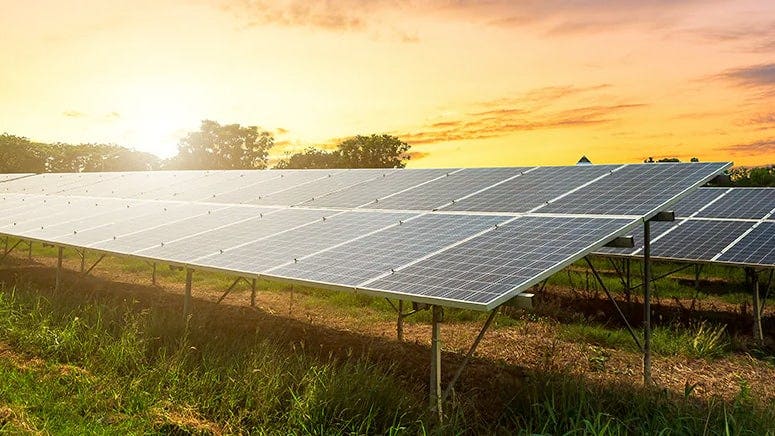Emissions and Energy
In 2021, we announced a science-based GHG-reduction goal to cut our absolute Scope 1 and Scope 2 emissions by more than 50 percent and our absolute Scope 3 emissions by 25 percent by 2030 compared to our 2018 baseline. Our emissions-reduction targets were approved by the Science Based Targets initiative (SBTi) as consistent with levels required to meet the highest goals of the Paris Climate Agreement. The targets covering emissions from our operations are aligned with reduction requirements to keep warming to 1.5°C globally."
Cutting Direct (Scope 1) and Indirect (Scope 2) Emissions
Renewable Energy
Investing in renewable energy is a key lever in reaching our Scope 1 and Scope 2 commitments. Through a number of Power Purchase Agreements (PPAs), Hershey has supported the construction of three utility-scale solar farms. Through these PPAs, Hershey accesses clean and renewable energy while creating local jobs and generating significant power for the communities where they are located.
Energy Efficiency
Increasing the energy efficiency of our facilities is an important part of our work to tackle emissions. Through our membership in the U.S. Environmental Protection Agency’s ENERGY STAR® Challenge for Industry, we join other companies who are also working to reduce energy intensity by 10 percent within five years. To drive this commitment, each Hershey location around the world has designated an Energy Champion responsible for implementing carbon savings projects, meeting conservation goals, identifying opportunities for energy reduction and efficiency, and engaging employees in these efforts.
In addition, we have joined the U.S. Department of Energy’s Better Buildings, Better Plants Program to reduce energy intensity throughout our U.S. manufacturing operations by 20 percent within 10 years. Through Better Plants, we are setting ambitious energy reduction goals, developing energy management plans, and tracking and reporting our annual progress.
Reducing Value Chain Emissions (Scope 3)
More than 90 percent of our carbon emissions are from Scope 3 in our extended value chain. Cocoa, dairy, sugar, packaging and logistics represent the areas where we see the greatest opportunities for emissions reductions. In each of these priority areas, we are identifying opportunities, engaging in multi-stakeholder planning and implementing meaningful actions toward our targets and advancing sustainability within our value chain.1
In addition, approximately 42 percent of our baseline Scope 3 emissions are due to land-use change from farm-level production of our ingredients. Addressing land use is a significant part of our climate action plans, and we have adopted a commitment to achieve a 25 percent absolute reduction in Scope 3 GHG emissions by 2030 against our 2018 baseline. As part of this initiative, we are partnering with our suppliers to drive improvements throughout the entire supply chain. We have delivered on our commitment to buy only 100 percent certified and sustainable cocoa and to direct-source 100 percent of our cocoa in high-risk areas through long-term relationships with known farmer groups, providing resources and education on sustainable farming and driving traceability to halt deforestation.
In both sugar and dairy, we are incorporating our climate efforts into new responsible sourcing programs. For example, our dairy operations are conducting a three-year pilot program, Sustainable Dairy PA, with our supplier Land O’Lakes and the Alliance for the Chesapeake Bay to make on-farm improvements to reduce emissions and improve waterways in the Pennsylvania area. Many of the sustainable agriculture projects have co-benefits beyond carbon and water, such as encouraging the adoption of farming practices that promote biodiversity and soil health.

From Nuts to Clean Energy: One Employee’s Story of Leading Hershey to Renewable Energy
Mark Kline, Hershey’s Senior Manager of Nut & Energy Sourcing, Global Commodities explains the exciting opportunities Hershey is exploring to transition our operations to renewable energy.
1 Scope 1: Direct GHG emissions occur from sources that are owned or controlled by the company.
Scope 2: Indirect greenhouse gas emissions from consumption of purchased electricity.
Scope 3: Other indirect emissions, such as from the farm-level production of our ingredients, the extraction and production of purchased materials and fuels, transport-related activities, outsourced activities, waste disposal, etc.